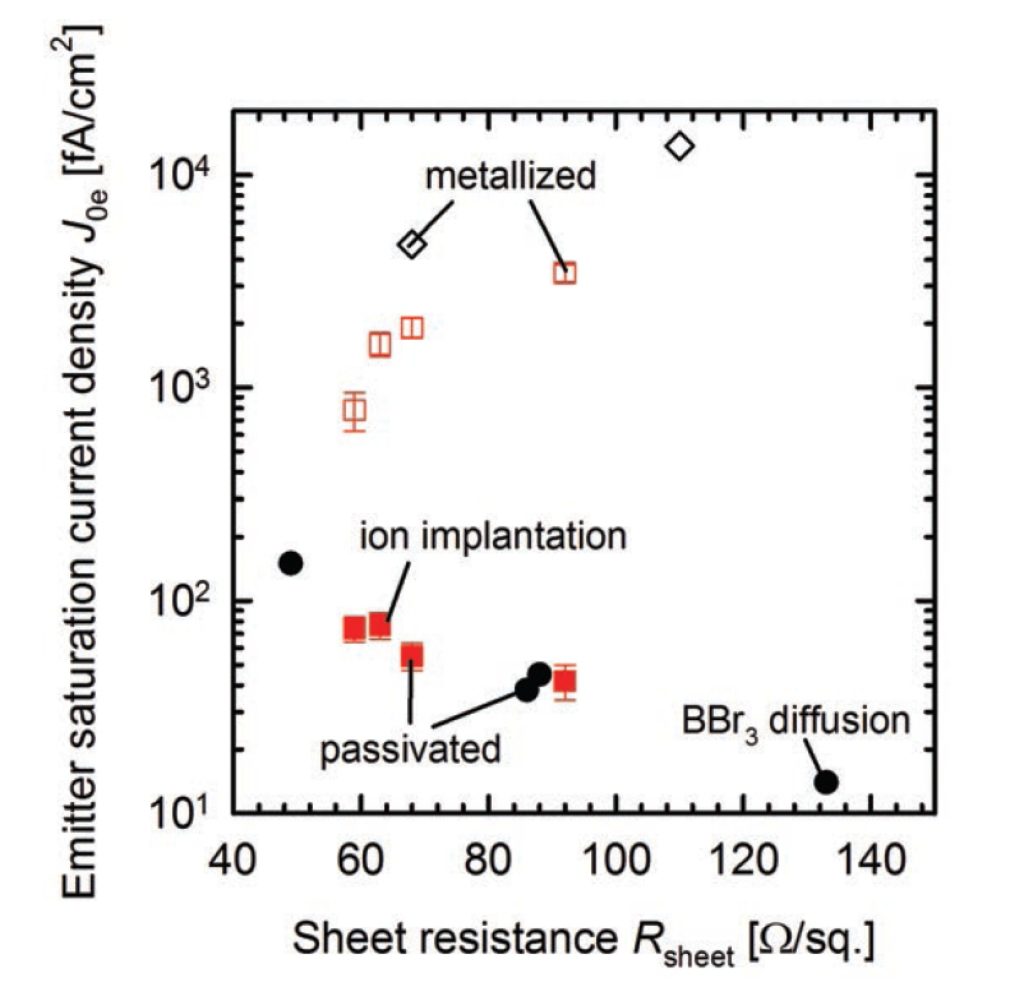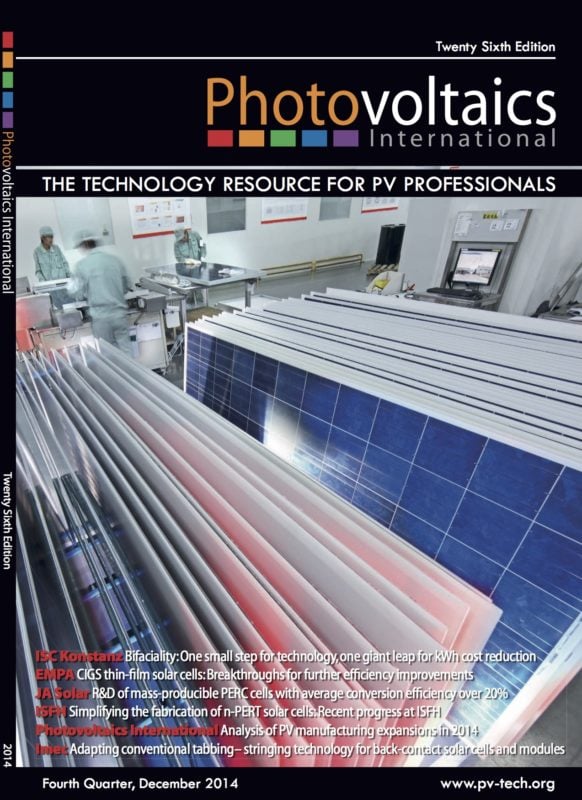By Bianca Lim, Project Leader, Institute for Solar Energy Research Hamelin (ISFH); Fabian Kiefer, Institute for Solar Energy Research Hamelin (ISFH); Nadine Wehmeier, Institute for Solar Energy Research Hamelin (ISFH); Till Brendemühl, Solar Cell Production Processes Group, Institute for Solar Energy Research Hamelin (ISFH); Yevgeniya Larionova, Research Scientist, Institute for Solar Energy Research Hamelin (ISFH); Frank Heinemeyer, Project Leader, Process Technology Group, Institute for Solar Energy Research Hamelin (ISFH); Jan Krügener, Associate Researcher, Institute of Electronic Materials and Devices, Leibniz University of Hanover; Robby Peibst, Group Leader, Institute for Solar Energy Research Hamelin (ISFH); Thorsten Dullweber, R&D Solar Cell Production Processes Group, Institute for Solar Energy Research Hamelin (ISFH)
In this paper large-area (239cm2) n-type passivated emitter, rear totally diffused (n-PERT) solar cells are compared with state-of-the-art p-type passivated emitter and rear cells (p-PERC) to evaluate potential advantages of n-PERT over p-PERC. In particular, an investigation has been carried out of fully screenprinted bifacial n-PERT solar cells, in which the boron-doped emitter is contacted with aluminiumcontaining silver (AgAl) pastes, as well as of n-PERT back-junction (BJ) solar cells, in which the B-doped emitter is locally contacted with screen-printed Al. Using two separate quartz furnace diffusions for the B- and P-doped regions, efficiencies of up to 20.3% on bifacial n-PERT solar cells and of up to 20.5% on n-PERT BJ solar cells were achieved. In comparison, reference p-PERC solar cells that were processed in parallel achieved efficiencies of up to 20.6% before light-induced degradation (LID), but degraded to 20.1% after 48 hours of illumination. In addition, ion implantation and pre-deposition of dopant sources have been evaluated as alternative technologies for forming the full-area doping of the front and rear wafer surfaces, thus reducing the number of processing steps for n-PERT solar cells. Using ion implantation and a co-annealing step, efficiencies of up to 20.6% for bifacial n-PERT solar cells have been achieved, and of up to 20.5% for n-PERT solar cells, in which the P-doped back-surface field is contacted with evaporated Al. By employing a boron silicate glass (BSG) deposited via plasma-enhanced chemical vapour deposition (PECVD) as a dopant source, along with a co-diffusion step, n-PERT BJ solar cells have been fabricated with up to 19.8% energy conversion efficiency.



